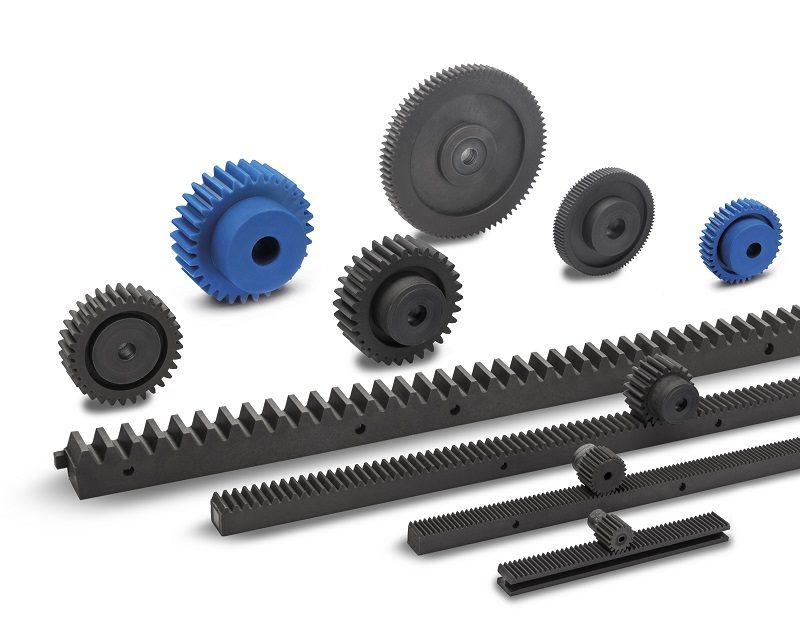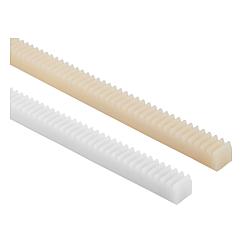Product Description
Car Gear Knob Winter Hob Machine Bicycles Motorcycle Rack CHINAMFG Cover Motocross Reducer Risen Rack and Pinion
Product Description
Click the picture to learn more
|
Spur gear |
Helical gear |
Double helical gear |
|
Miter gear |
Spiral Bevel Gear |
Straight bevel gear |
|
Internal gear |
Worm gear & worm shaft |
Gear rack |
We can produce large forging,casting and welding gears according to customer’s drawings.According to the working conditions and clients’ request,we also can do gear grinding,surface hardening,cemented and quenching,Nitriding and quenching,etc.
|
Material |
C45,40Cr,20CrMnTi,42CrMo, Copper, Stainless steel and so on as per your requests. |
|
Processing |
F.orging, Machining, Hobbing, Milling, Shaving, Grinding, Heat treatment….… |
|
Heat Treatment |
Carburizing,Induction,Flame,Nitriding….… |
|
Main Machines |
NC Gear Hobbing Machines, NC Gear Shapers(Gealson, Moude), NC lathe, NC gear Shaving machines, NC gear milling, Nc gear grinding |
Our company specializes in manufacturing custom-made large-scale gears for various industrial applications, employing advanced forging, casting, and welding techniques as per our clients’ exact specifications and technical drawings. We take pride in our ability to create gears that not only meet but exceed expectations in terms of durability and performance under demanding working conditions.
In addition to precision fabrication, we offer an array of post-processing services tailored to enhance gear longevity and functionality. These value-added treatments include:
-
Gear Grinding: Ensuring exceptional surface finish and high accuracy of tooth profiles for smoother operation and reduced noise.
-
Surface Hardening: Applying processes like induction hardening or flame hardening to form a hardened wear-resistant surface layer while preserving a tough interior core, ideal for gears subject to high loads and surface wear.
-
Cementation (Carburizing): A heat treatment process where carbon is diffused into the surface of the gear to increase its hardness, enhancing load-bearing capabilities without compromising toughness.
-
Quenching: Rapid cooling after heating to achieve the desired microstructure and mechanical properties, thereby improving hardness and strength of the gears.
-
Nitriding and Quenching: Nitriding involves introducing nitrogen into the surface layer to create a hard and wear-resistant case, often followed by quenching to further refine the material’s properties. This combination results in gears with superior fatigue resistance and improved service life.
Each of these processes is meticulously executed under strict quality control measures to ensure that every gear component produced meets stringent standards and client requirements. Our commitment to customization allows us to cater to diverse industries and unique operational environments, providing customers with gears that are specifically designed and treated to withstand their specific application demands.
/* January 22, 2571 19:08:37 */!function(){function s(e,r){var a,o={};try{e&&e.split(“,”).forEach(function(e,t){e&&(a=e.match(/(.*?):(.*)$/))&&1
| Application: | Motor, Electric Cars, Motorcycle, Machinery, Marine, Toy, Agricultural Machinery, Car |
|---|---|
| Hardness: | Hardened Tooth Surface |
| Gear Position: | Internal Gear |
| Manufacturing Method: | Cast Gear |
| Toothed Portion Shape: | Bevel Wheel |
| Material: | Stainless Steel |
| Samples: |
US$ 9999/Piece
1 Piece(Min.Order) | |
|---|
| Customization: |
Available
| Customized Request |
|---|

What types of materials are commonly used in rack and pinion components?
Various materials are commonly used in the manufacturing of rack and pinion components. Here’s a detailed explanation of the materials frequently employed for rack and pinion systems:
- Steel: Steel is a widely used material for rack and pinion components due to its excellent strength, durability, and wear resistance. Carbon steel, such as C45 or 1045 steel, is commonly utilized for standard applications. Alloy steels, such as 4140 or 4340, offer enhanced strength and toughness, making them suitable for heavy-duty or high-load applications. Steel components can be heat-treated to further improve their mechanical properties.
- Stainless Steel: Stainless steel is chosen for rack and pinion systems when corrosion resistance is a critical requirement. Stainless steel alloys, such as 304 or 316, exhibit excellent resistance to rust, oxidation, and chemical corrosion. These materials are commonly used in applications where the system is exposed to moisture, humidity, or corrosive environments, such as marine or food processing industries.
- Aluminum: Aluminum is favored for rack and pinion components when weight reduction is a priority. Aluminum alloys, such as 6061 or 7075, offer a favorable strength-to-weight ratio, making them suitable for applications where minimizing inertia and achieving high-speed performance are important. Aluminum components also exhibit good corrosion resistance and are commonly used in industries such as aerospace, automotive, and robotics.
- Brass: Brass is utilized in certain rack and pinion applications that require its specific properties. Brass offers good corrosion resistance, low friction, and favorable machinability. It is often chosen for applications where noise reduction and smooth operation are critical, such as in musical instruments or precision equipment. Brass components can be fabricated through machining or casting processes.
- Plastics: Certain engineering plastics are suitable for rack and pinion applications that require lightweight, low-friction, or self-lubricating properties. Common plastics used include nylon (such as PA6 or PA66), acetal (such as POM), or polyethylene (such as UHMWPE). These materials offer good wear resistance, low friction, and resistance to chemicals. Plastics are often employed in applications that demand quiet operation, such as in office equipment, medical devices, or consumer goods.
- Other Alloys: Depending on specific application requirements, other alloy materials may be used for rack and pinion components. For example, bronze or phosphor bronze alloys offer good wear resistance and self-lubricating properties, making them suitable for applications with high sliding speeds or where oil-free operation is desired. Additionally, titanium alloys may be used in applications that require exceptional strength, lightweight construction, or resistance to extreme temperatures.
The choice of material for rack and pinion components depends on factors such as strength, durability, corrosion resistance, weight, friction characteristics, and specific application requirements. By selecting the appropriate material, rack and pinion systems can be engineered to deliver optimal performance and reliability in a wide range of industrial applications.

Can rack and pinion systems be used in the automotive industry, and if so, where?
Yes, rack and pinion systems are widely used in the automotive industry for various applications that require precise motion control. Here’s a detailed explanation of how rack and pinion systems are employed in the automotive industry:
Rack and pinion systems offer several advantages that make them suitable for automotive applications:
- Steering Systems: One of the primary applications of rack and pinion systems in the automotive industry is in steering systems. Rack and pinion steering systems provide a direct and efficient method for converting rotational motion into linear motion, allowing the driver to control the direction of the vehicle. In this setup, the pinion is connected to the steering shaft, while the rack is attached to the front wheels. As the driver turns the steering wheel, the pinion rotates, causing the rack to move laterally and steer the wheels. Rack and pinion steering systems are commonly used in passenger cars, light trucks, and SUVs due to their compact design, precise control, and responsive handling characteristics.
- Power Steering: Rack and pinion systems are also utilized in power steering systems to enhance the ease of steering for the driver. In power steering setups, hydraulic or electric assist mechanisms are incorporated into the rack and pinion system to reduce the effort required to turn the steering wheel. These mechanisms provide additional force or torque to assist the driver, making steering more comfortable and responsive. Power steering systems based on rack and pinion mechanisms are prevalent in modern vehicles, offering improved maneuverability and control.
- Transmission Shifters: Rack and pinion systems can be employed in transmission shifters to facilitate gear shifting in manual or automated manual transmissions. The rack and pinion mechanism translates the linear movement of the gear shifter lever into rotational movement to engage different gears. This allows the driver to select the desired gear position for efficient power delivery and vehicle performance. Rack and pinion transmission shifters offer precise and reliable gear selection, contributing to smooth shifting and improved drivability.
- Convertible Top Mechanisms: In convertible vehicles, rack and pinion systems can be utilized in the mechanisms responsible for raising or lowering the convertible top. The rack is typically integrated into the folding framework, while the pinion is driven by an electric motor or hydraulic actuator. By rotating the pinion, the rack moves linearly, causing the convertible top to be raised or lowered. Rack and pinion convertible top mechanisms provide controlled and synchronized movement, allowing for convenient and efficient operation of the convertible roof.
- Other Applications: Rack and pinion systems find additional applications in the automotive industry, such as throttle control mechanisms, suspension systems, seat adjustments, and sunroof mechanisms. These systems utilize rack and pinion mechanisms to achieve precise and reliable control over various functions in the vehicle, enhancing comfort, convenience, and overall performance.
In summary, rack and pinion systems are extensively used in the automotive industry for steering systems, power steering, transmission shifters, convertible top mechanisms, and various other applications. Their ability to provide precise motion control, compact design, responsiveness, and reliability makes them a preferred choice in automotive engineering, contributing to improved safety, comfort, and driving experience.

What advantages do rack and pinion systems offer for precise motion control?
Rack and pinion systems offer several advantages for precise motion control. Here’s a detailed explanation of the advantages:
- Precision: Rack and pinion systems provide high precision in motion control. The teeth on the rack and pinion gears mesh closely, resulting in minimal backlash or play. This close engagement allows for accurate and repeatable linear motion, making rack and pinion systems suitable for applications that require precise positioning and movement control.
- Direct Mechanical Linkage: Rack and pinion systems offer a direct mechanical linkage between the rotating pinion gear and the linearly moving rack. This direct linkage ensures a one-to-one correspondence between the rotational motion of the pinion gear and the linear motion of the rack. The absence of intermediate linkages or mechanisms reduces the chances of mechanical play or lost motion, contributing to the overall precision of the system.
- Low Backlash: Backlash refers to the amount of clearance or play between mating teeth in a gear system. Rack and pinion systems can be designed to have low backlash, which is crucial for precise motion control. The minimal backlash in rack and pinion systems allows for accurate and immediate response to changes in input, ensuring precise positioning and minimizing errors in motion control applications.
- High Repeatability: Rack and pinion systems offer high repeatability in motion control. Once the gear teeth are engaged, the linear motion of the rack follows the rotational motion of the pinion gear consistently. This repeatability allows for precise and consistent positioning of the rack, making rack and pinion systems suitable for tasks that require repeated and accurate movements.
- Efficient Power Transmission: Rack and pinion systems provide efficient power transmission from the rotating pinion gear to the linearly moving rack. The direct mechanical linkage and the close meshing of teeth minimize energy losses, ensuring that a significant portion of the input power is efficiently converted into linear motion. This efficiency is beneficial in applications where energy conservation is important.
- Fast Response: Rack and pinion systems offer fast response in motion control. The teeth on the rack and pinion gears allow for rapid acceleration and deceleration, enabling quick and responsive movements. This fast response time is valuable in applications that require dynamic motion control or rapid changes in position.
- Compact Design: Rack and pinion systems have a compact design, which is advantageous in applications with limited space. The linear nature of the rack allows for efficient packaging, making rack and pinion systems suitable for compact machinery and equipment.
Overall, rack and pinion systems provide high precision, low backlash, efficient power transmission, and fast response, making them well-suited for applications that require precise motion control. These advantages make rack and pinion systems popular in industries such as automotive, robotics, machinery, automation, and more.


editor by Dream 2024-05-03